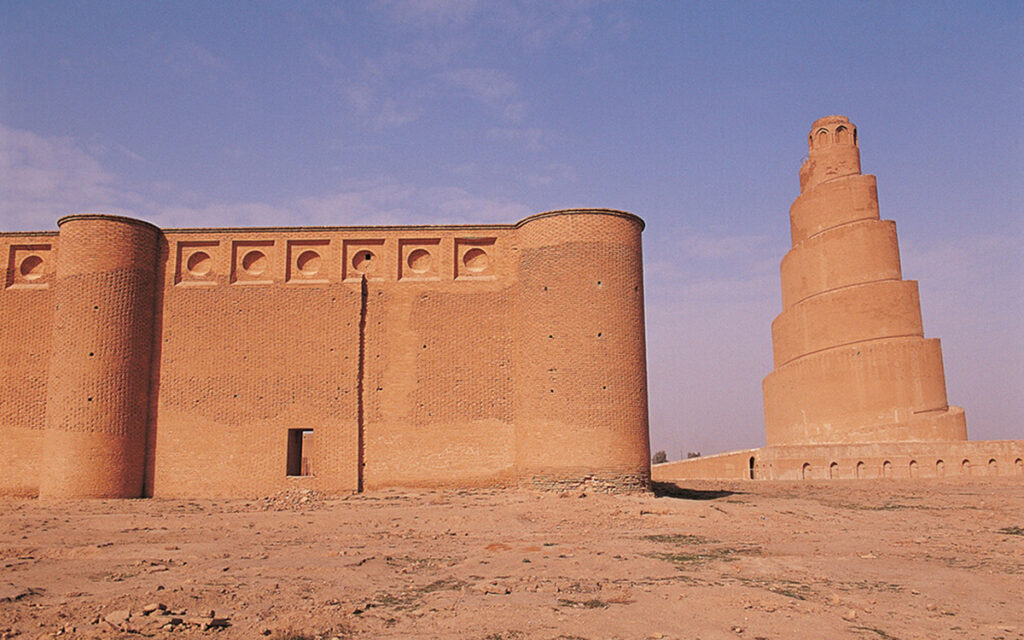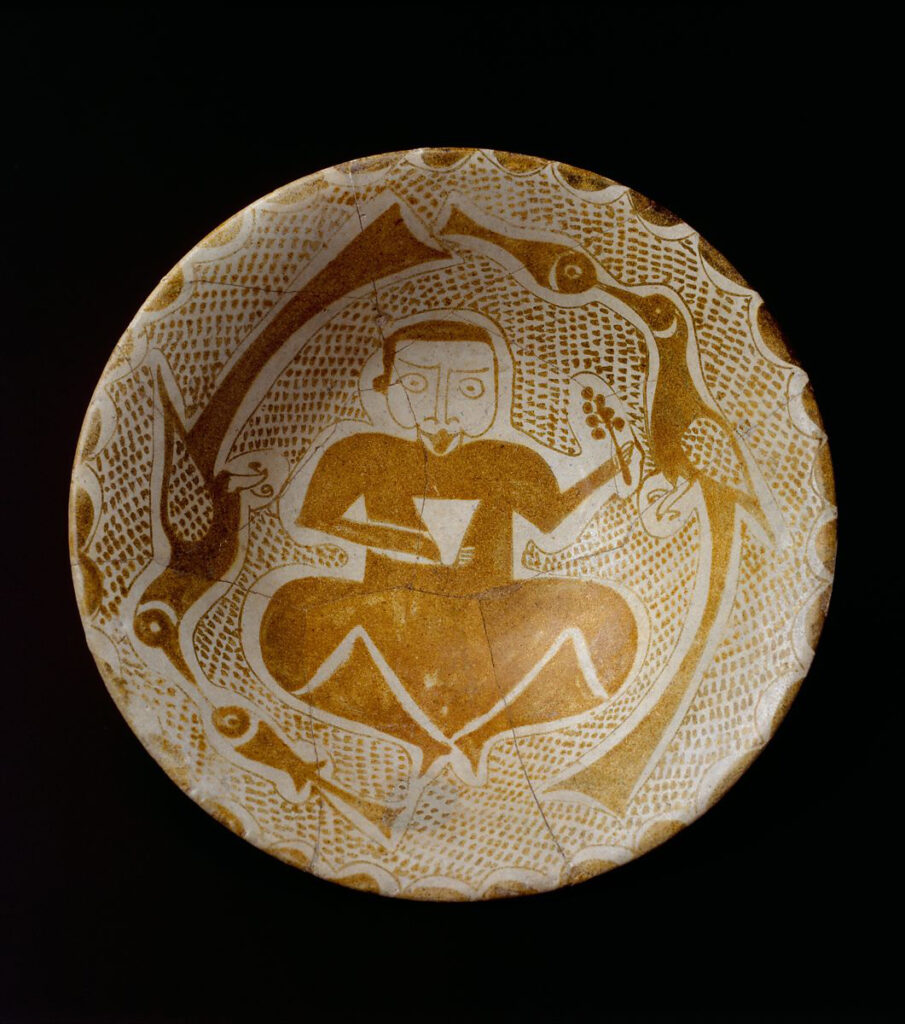អ៊ាបបាសិត (Abbasid) គឺជាឈ្មោះនៃរដ្ឋអ៊ីស្លាមដ៏មានឥទ្ឋិពលខ្លាំងក្លា ក្នុងតំបន់មជ្ឈិមបូព៌ាដោយមានវិសាលភាពទឹកដីចាប់ពីប្រទេសទុយនេស៊ី (Tunisia) រហូតដល់តំបន់អាស៊ីកណ្តាល។ បច្ចុប្បន្នជាប្រទេសអ៊ីរ៉ាក់(Iraq)។

រដ្ឋអ៊ីស្លាមមួយនេះចាប់ផ្តើមរីកចម្រើនចាប់ពីឆ្នាំ ៧៥០នៃគ.ស. រហូតដល់ឆ្នាំ១២៥៨ នៃ គ.ស. ពោលគឺមានរយៈពេលជាង ៥០០ ឆ្នាំ និងមានទីក្រុងពីរសំខាន់ៗគឺ សាម៉ារ៉ា(Samarra) និង បាកដាដ ( Baghdad) ដែលបច្ចុប្បន្នជារាជធានីនៃប្រទេសអ៊ីរ៉ាក់។
បាដដាដ គឺជាទីក្រុងបុរាណ និងសំខាន់ជាងគេក្នុងចំណោមក្រុងដ៏ទៃទៀត ចាប់តាំងពីសម័យកាល អ៊ាបបាសិត ពោលគឺចាប់ពីឆ្នាំ៧៦២នៃគ.ស.រហូតដល់បច្ចុប្បន្ន។ ទីក្រុងនេះមានទីតាំងស្ថិតនៅក្បែរនឹងទន្លេ ទីគ្រីស (Tigris) និងទន្លេ អឺប្រាត (Euphrates) ដែលជាតំបន់នៃអរិយធម៌មេសូប៉ូតាមី។ ក្នុងសម័យកាលអ៊ាបបាសិត ទីក្រុងនេះ គឺជារាជធានី និងជាតំបន់ពាណិជ្ជកម្មដ៏សំខាន់សម្រាប់ តភ្ជាប់ពីតំបន់មជ្ឈិមបូព៌ាទៅតំបន់អាស៊ីកណ្តាល។
រីឯសាម៉ារ៉ា ជាក្រុងស្ថិតនៅខាងជើងនៃរាជធានីបាដដាដ ប្រមាណជាង ១១០គ.ម ។ ការតាំងទីនៅទីក្រុងសាម៉ារ៉ា (Samarra) គឺមានរយៈពេលខ្លីតែប៉ុណ្តោះ ដែលមានចាប់ពីដើមស.វ.ទី៩ គ.ស. រហូតដល់ចុងស.វ.ទី៩ គ.ស. ពោលគឺចាប់ពីឆ្នាំ ៨៣៦ រហូតដល់៨៩២ នៃគ.ស.។ សាម៉ារ៉ា គឺជាទីក្រុងសំខាន់ទី២នៃរដ្ឋអ៊ីស្លាម អ៊ាបបាសិត បន្ទាប់ពីទីក្រុងបាកដាដ។

តាមរយៈការស្រាវជ្រាវចាប់ពីឆ្នាំ១៩៨៣ រហូតមកដល់បច្ចុប្បន្ន បានបង្ហាញពីទិន្នន័យថ្មីៗជាច្រើន អំពីការតាំងទី និងសំណង់ស្ថាបត្យកម្មនៅក្នុងទីក្រុងមួយនេះ ជាពិសេសសំណង់ Jawsaq al-Khaqani (កសាងឆ្នាំ ៨៣៦?) ដែលជារាជវាំង, ព្រះវិហារ al-Mutawakkil(កសាងឆ្នាំ ៨៤៨ ដល់៨៥២គ.ស.) និង ព្រះវិហារ Abu Dulaf (កសាងឆ្នាំ ៨៥៩ ដល់៨៦១គ.ស.)។ សំណង់ទាំងអស់នោះ គឺសុទ្ធសឹងតែជាសិល្បៈដ៏សំខាន់នៃវប្បធម៌ អ៊ាបបាសិត ហើយក៏មានឥទ្ឋិពលលើសិល្បៈនៅតំបន់ផ្សេងៗទៀត ដូចនៅ អេហ្ស៊ីប និងអាស៊ីកណ្តាល នាសម័យដូចគ្នាដែរ។

ចាប់ពីស.វ.ទី ៩ ដល់ទី ១២គ.ស. គឺជាសម័យកាលដែលហៅថាជាយុគសម័យមាសនៃវប្បធម៌ អ៊ាបបាសិត ដោយក្រុង បាកដាដ និងសាម៉ារ៉ា គឺជាទីក្រុងនៃវប្បធម៌ និងក្រុងពាណិជ្ជកម្មដ៏ធំ នៅក្នុងតំបន់មជ្ឈិមបូព៌ា។ នៅអំឡុងសម័យនោះ សំណង់ សិល្បៈនៃវប្បធម៌ អ៊ាបបាសិតមានការរីកចម្រើនខ្លាំង ទាំងបច្ចេកទេស និងប្រណិតភាពគួរឱ្យគត់សម្គាល់ក្នុងប្រវត្តិសិល្បៈនៃសំណង់សាសនាអ៊ីស្លាម។ ជាពិសេសសំណង់ស្ថាបត្យកម្មនៅទីក្រុង សាម៉ារ៉ា ដែលរួមមាន ការរៀបចំប្លង់នៃក្រុងតាមបែបធរណីមាតុ ដែលហៅថា Geometric សំណង់ព្រះវិហារ រូបម៉ូសាអីក (mosaics) សិល្បៈលើក្បាច់លម្អលើ កុលាភាជន៍ និងលោហៈកម្ម គឺជាភស្ថុតាងដ៏សំខាន់ដែលបង្ហាញពីការកកើតនៃរដ្ឋអ៊ីស្លាម អ៊ាបបាសិតដំបូងៗ។

ប៉ុន្តែនៅពេលដែលមានសង្គ្រាមស៊ីវិលក្នុងប្រទេសអ៊ីរ៉ាក់ ចាប់ពីឆ្នាំ២០០៣មក សំណង់ស្ថាបត្យកម្មបុរាណជាច្រើនបានបំផ្លាញ និងខ្លះទៀតក្លាយជាមូលដ្ឋានទ័ព។ គួរបញ្ជាក់ដែរថា ទីក្រុង សាម៉ារ៉ា ត្រូវបានចូលក្នុងបញ្ជីអង្គការបេតិភណ្ឌពិភពលោក នៅក្នុងឆ្នាំ ២០០៧ ក្នុងផ្ទៃដី សុរប 31,414 ហិតា។
ជារួមមករដ្ឋអ៊ីស្លាម អ៊ាបបាសិត គឺមានអាយុកាលជាង ៥០០ឆ្នាំ ដែលចាប់ពីឆ្នាំ ៧៥០គ.ស. ដល់១២៥៨គ.ស. និងមានសិល្បៈវប្បធម៌ដ៏រីកចម្រើនខ្លាំង តាមរយៈសំណង់ស្ថាបត្យកម្មជាច្រើននៅក្នុងទីក្រុងសំខាន់ពីរ គឺ បាដដាដ និងសាម៉ារ៉ា៕
—————————–
Abbasid Culture
Abbasid is the name of a powerful Islamic state in the Middle East, extending from Tunisia to Central Asia. It is now in Iraq.
This Islamic State began to flourish in 750 CE until 1258 CE, it meant more than 500 years old and has two main cities, Samarra and Baghdad, which is now the capital of Iraq.
Baghdad has been one of the oldest and most important cities in among others from the Abbasid period 762 CE to the present. The city is near the Tigris and Euphrates rivers which are the areas of Mesopotamian civilization. During the Abbasid period, the city was the capital and an important commercial area connecting the Middle East to Central Asia.
Samara is a city about 110 km north of Baghdad. The settlement in Samarra was a short period, dating from the beginning of the 9th century until the end of the 9th century. Samara is the second largest city in the Islamic State of Abbasid after Baghdad.
The research from 1983 to the present has revealed a lot of new data on the location and architecture of this city, especially the Jawsaq al-Khaqani (built 836 CE?) which is a palace, al-Mutawakkil mosque (built 848 to 852 CE), and Abu Dulaf mosque (built 859 to 861 CE). All of these structures are important art of Abbasid culture and also influenced art in other regions, such as Egypt and Central Asia at the same time.
From the 9th to the 12th century, it was the so-called Golden Era of Abbasid culture, with Baghdad and Samara being the largest cultural and commercial cities in the Middle East.
During that period, the artistic architecture of Abbasid culture flourished, both technically and luxuriously, remarkably in the artistic history of Islamic architecture. In particular, the architectural structures of Samara city, including the urban planning in a geometrical form called geometric, mosque structures, Mosaics statues, decoration on the artifacts and the metal, are important evidence to demonstrate the origin of the Islamic State of the early Abbasid period. However, since the civil war in Iraq 2003, there are many ancient structures have been destroyed and some become military bases. It should be noted that Samara was designated on the World Heritage List in 2007 with a total area of 31,414 hectares.
In general, the Islamic State of Abbasid is more than 500 years old, dating from 750 CE to 1258 CE and there is a highly developing cultural art through the many architectural structures in the two main cities, Baghdad and Samara.
អត្ថបទដោយ៖ លោក អេង តុលា






